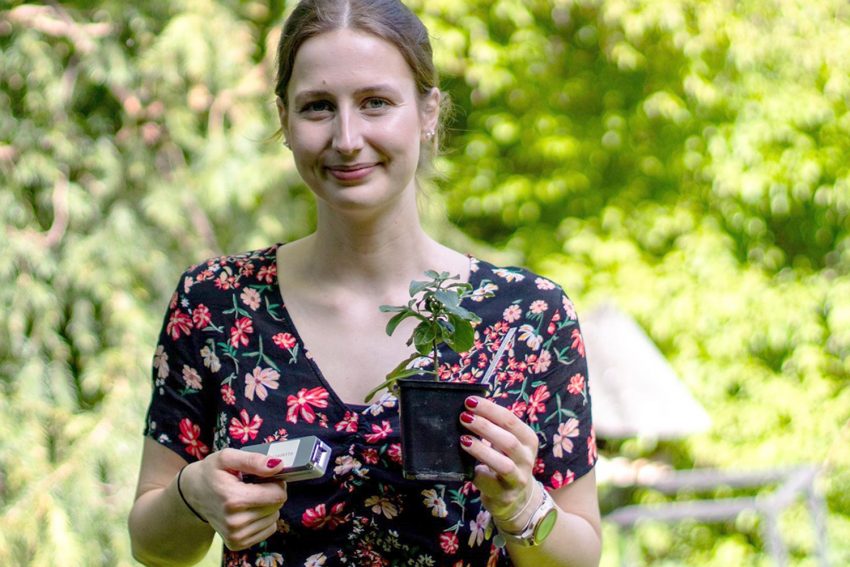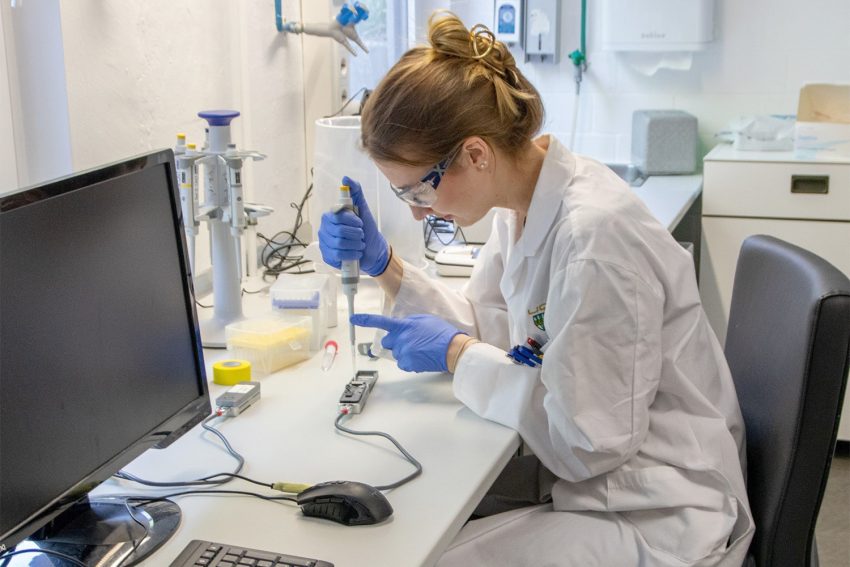Successful research while still studying Biology student explores the biomedical potential of plants
Ronja Friedhoff has spent the last few months decoding the genetic information of various medicinal plants using sequencing experiments. The biology student from Technische Universität Braunschweig has now been invited to present her findings at an international conference in London (‘London Calling 2024’).

Ronja Friedhoff presents genome sequencing projects in Lodon. Photo credit: Oxford Nanopore Technologies
“Presenting on the big stage in front of several hundred people and knowing that over a thousand people were watching online was a very special experience,” says Ronja Friedhoff. For me, this conference visit was also a great opportunity to exchange ideas and network with leading international researchers in the field of nanopore sequencing. The fact that she was able to gain extensive practical experience and participate in research projects at an early stage of her studies was crucial to her success.
Stinging nettle and foxglove decoded
Using nanopores in an artificial membrane, Ronja Friedhoff has analysed millions of individual DNA molecules in high throughput. This has already made it possible to analyse the genomes of several plants of pharmaceutical interest, such as stinging nettle, foxglove and sleeping berry. “I am fascinated by the possibility of using sequencing to gain insights into the genetic information of living organisms,” says Ronja Friedhoff, who is also working on the bioinformatic analysis of the data generated.
Goal: production of active ingredients that mimic nature

Ronja Friedhoff with a MinION used for nanopore sequencing and the medicinal plant Withania somnifera. The genome of Withania somnifera was sequenced by Ronja Friedhoff using the MinION. Photo credit: Jakob Horz/TU Braunschweig
Genetic information can be used to trace the biosynthesis pathways of plant compounds. The young scientist is working in the research group of Prof. Boas Pucker (Institute of Plant Biology, BRICS, TU Braunschweig) in cooperation with the Institute of Pharmaceutical Biology and the research group of Prof. Jakob Franke (Leibniz Universität Hannover).
During her previous research in the Pucker group, she was involved in three publications. “In order to exploit the potential of medicinal plants biotechnologically, we need to understand how these plants produce their active substances,” explains Ronja Friedhoff. The work on drug candidates is part of the ‘Engineering for Health’ research centre at TU Braunschweig.
Great interest in virology
During her bachelor’s degree, Ronja Friedhoff spent several months as a research intern in a virology laboratory in Canada. “This experience abroad was great and I can only recommend it to other students,” says Ronja Friedhoff. Now she can combine this interest with her work on plants.
“There are several examples in the literature of plants that produce substances with antiviral activity,” she explains.
One example is catechins and epicatechins, which have been shown to be effective against influenza A viruses. Both substances have been studied in particular in green tea, but are also produced by other plants such as stinging nettle.

Ronja Friedhoff loading a flow cell for nanopore sequencing. Photo credit: Jakob Horz/TU Braunschweig
In the future, Ronja Friedhoff would like to continue her research into nanopore sequencing and the bioinformatic analysis of sequencing data, for example as part of her master’s thesis. “The technological progress in the field of sequencing is really impressive. Experiments that can be carried out by a single person in a few days would have taken international teams months to complete just a few years ago,” says the researcher. In addition to DNA and RNA molecules, Ronja Friedhoff would also like to use this technology to analyse proteins in the future.
